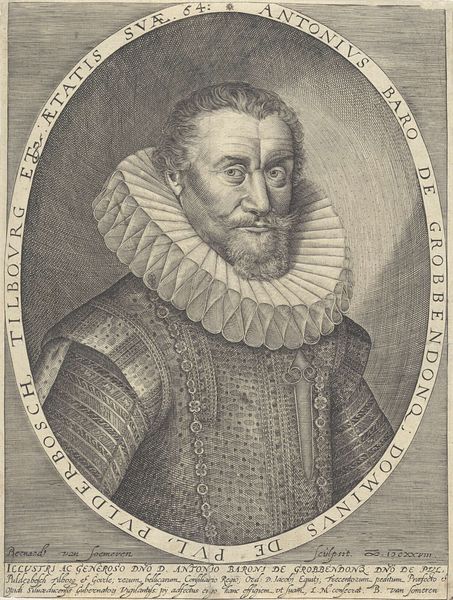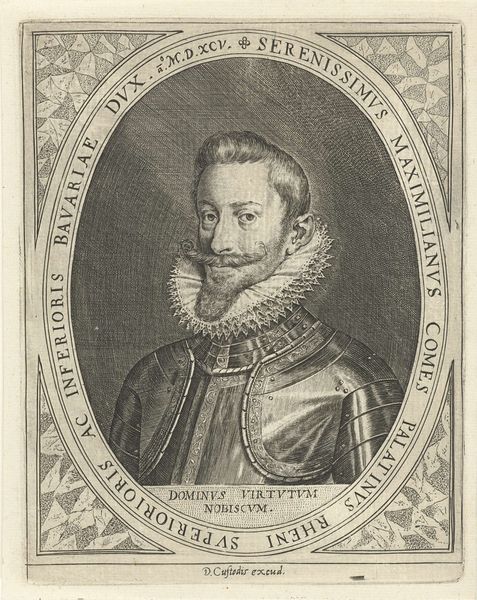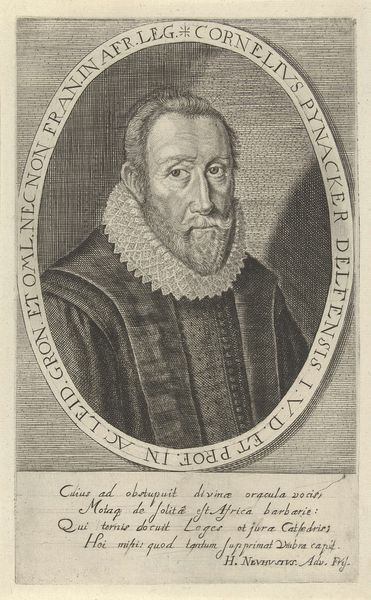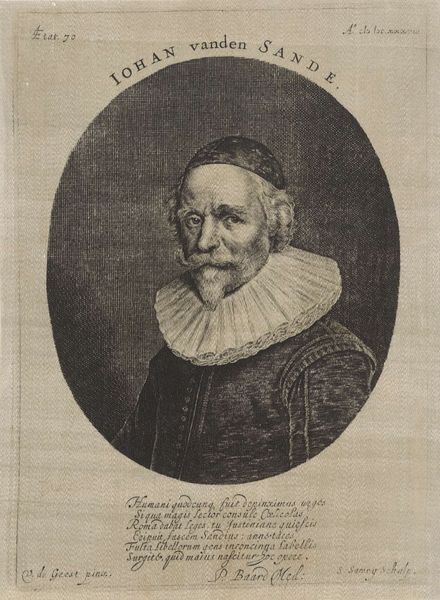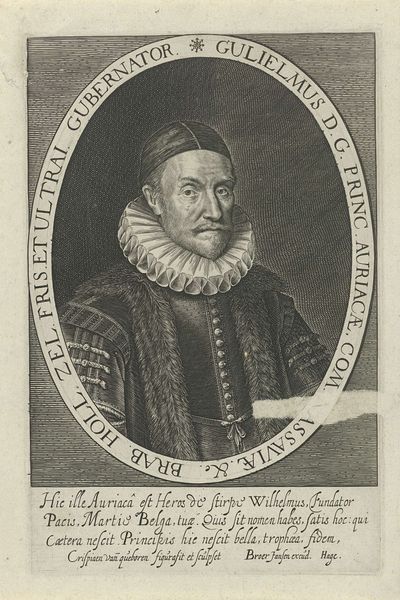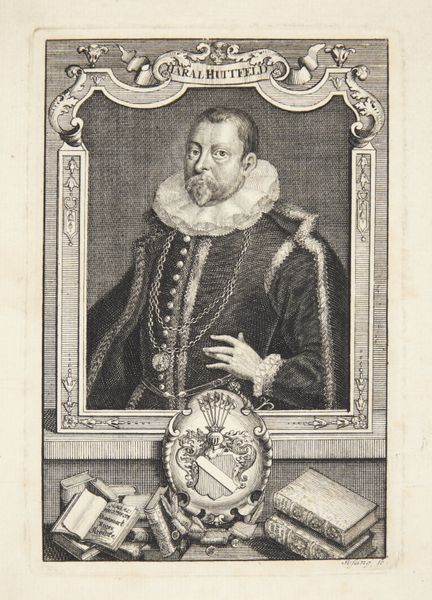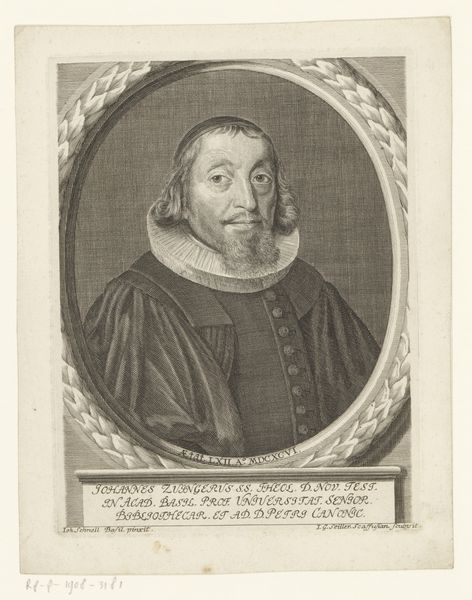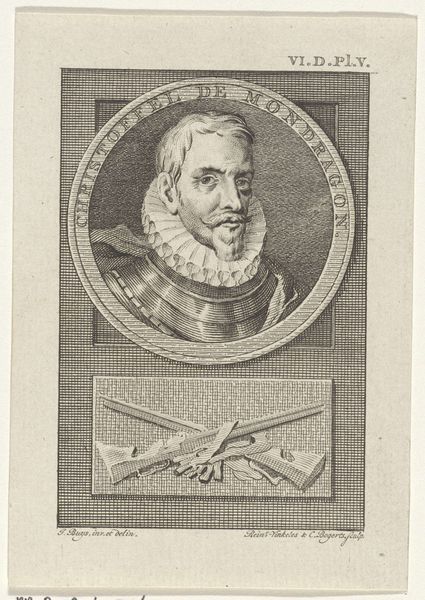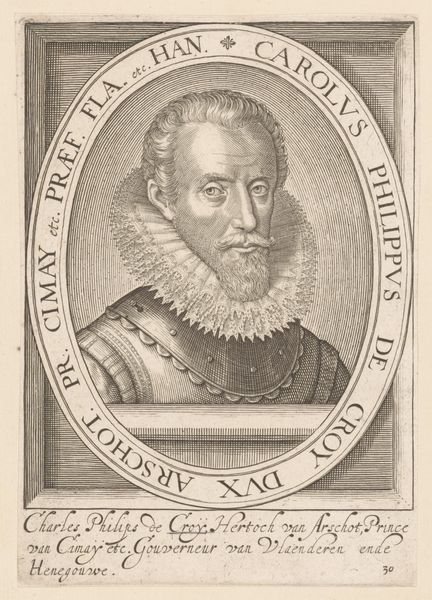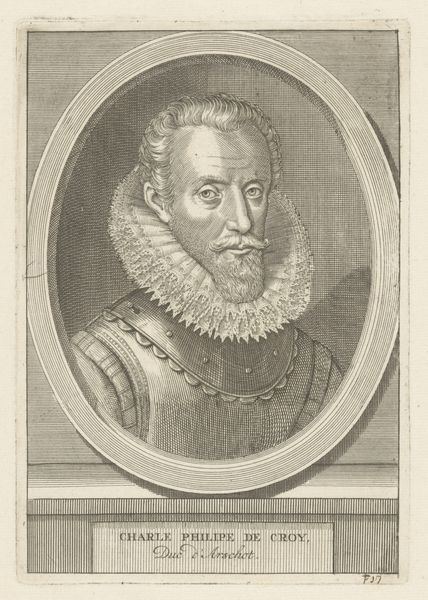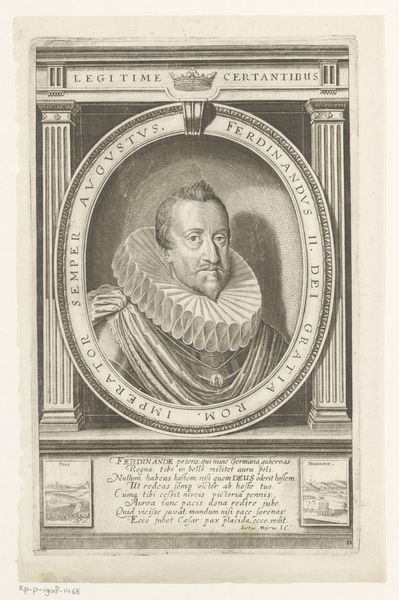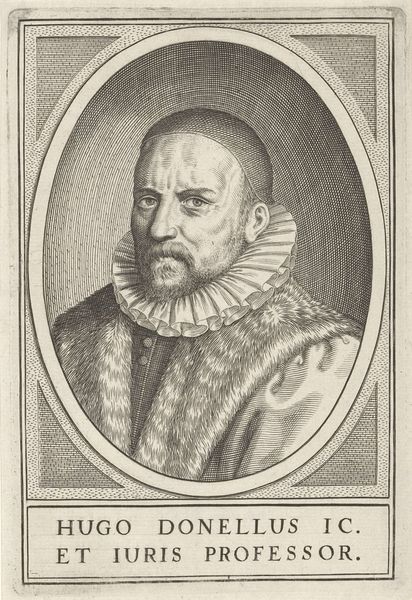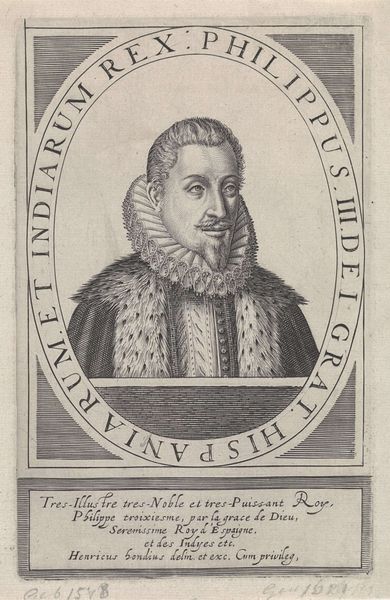
Portret van Hendrik Laurensz. Spieghel op dertigjarige leeftijd 1659 - 1731
0:00
0:00
engraving
#
portrait
#
baroque
#
dutch-golden-age
#
old engraving style
#
engraving
Dimensions: height 164 mm, width 103 mm
Copyright: Rijks Museum: Open Domain
Curator: Here we have Pieter van Gunst’s “Portret van Hendrik Laurensz. Spieghel op dertigjarige leeftijd,” an engraving dating from between 1659 and 1731. It's currently held here at the Rijksmuseum. Editor: The level of detail is astonishing; it really captures the stoic mood and quiet authority, wouldn't you agree? The tonality is just exquisite. Curator: Absolutely. Observe how the baroque style informs the framing device – the inscription and date rendered as part of the portrait’s structure rather than simply placed beside it. Notice, too, how the artist uses a masterful engraving technique to delineate form, playing with shadow and light across Spieghel’s features, and clothing. Editor: Looking at this engraving, I immediately think about Spieghel's socio-political role. He was part of an elite class enjoying the Golden Age while others struggled. Consider how his clothing and ruff reflect economic privilege—a stark visual marker of inequality that defined the Dutch Republic. This is not just about artistic mastery, but also about power dynamics inscribed onto paper. Curator: Undoubtedly, the historical context is vital. But one must also recognize the intrinsic properties of the work. The formal arrangement – the central figure encased within a sharply delineated circle – produces a captivating figure, anchoring our gaze to Spieghel’s calm visage and imbuing the subject with order and serenity. Editor: Perhaps, but what about that inscribed text at the base? What does it tells us about his position within society at large, how that sense of ordered calm could be leveraged or withheld according to the religious politics of the period? Curator: Point taken. Ultimately, both context and close examination enhance our appreciation. The play of light and shadow certainly speaks of Baroque dynamism. Editor: Yes, precisely! And a view through both a formal lens and a lens sensitive to historical inequities encourages dialogue and, indeed, further reflection on society, power, and identity.
Comments
No comments
Be the first to comment and join the conversation on the ultimate creative platform.
